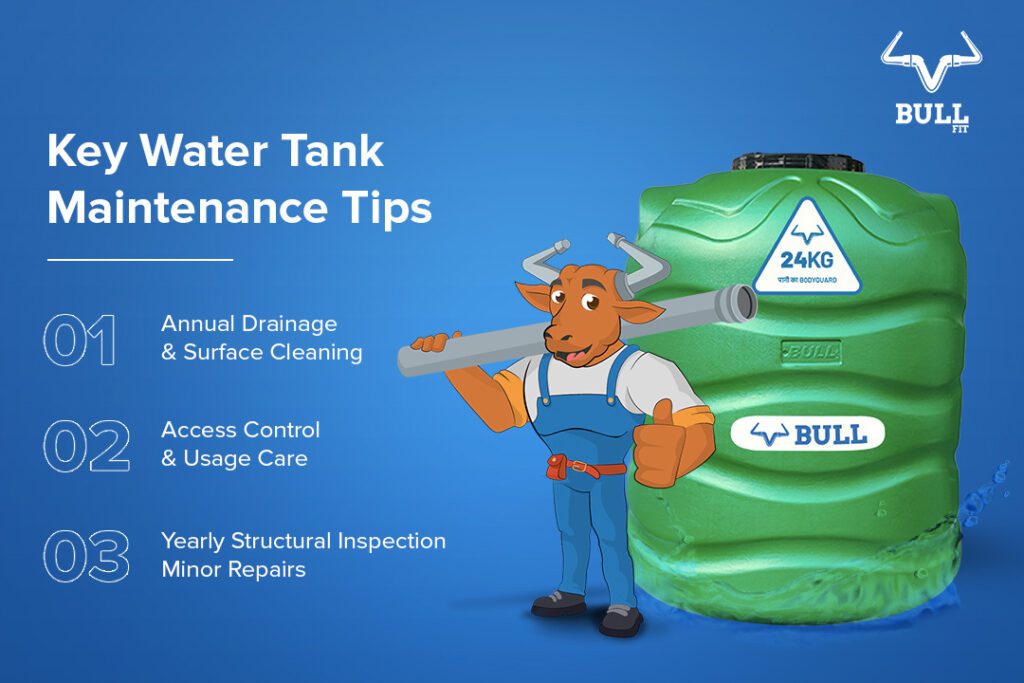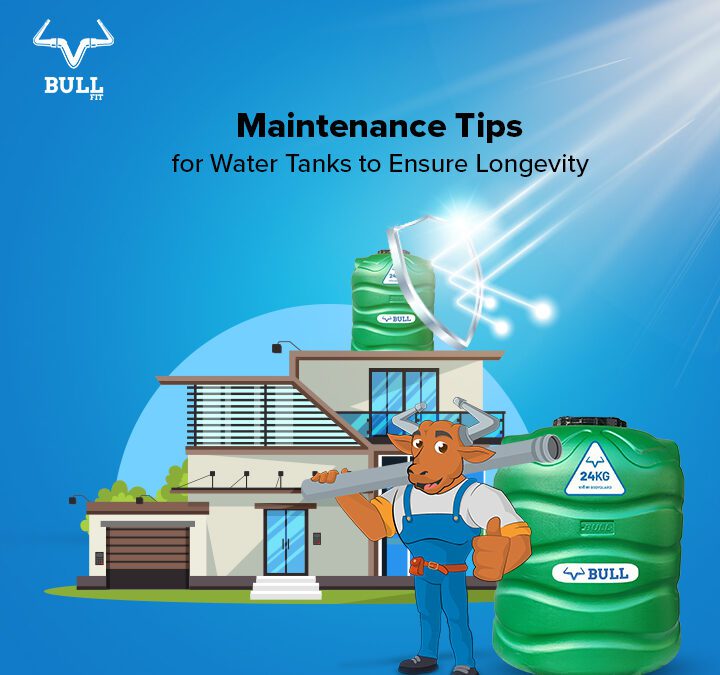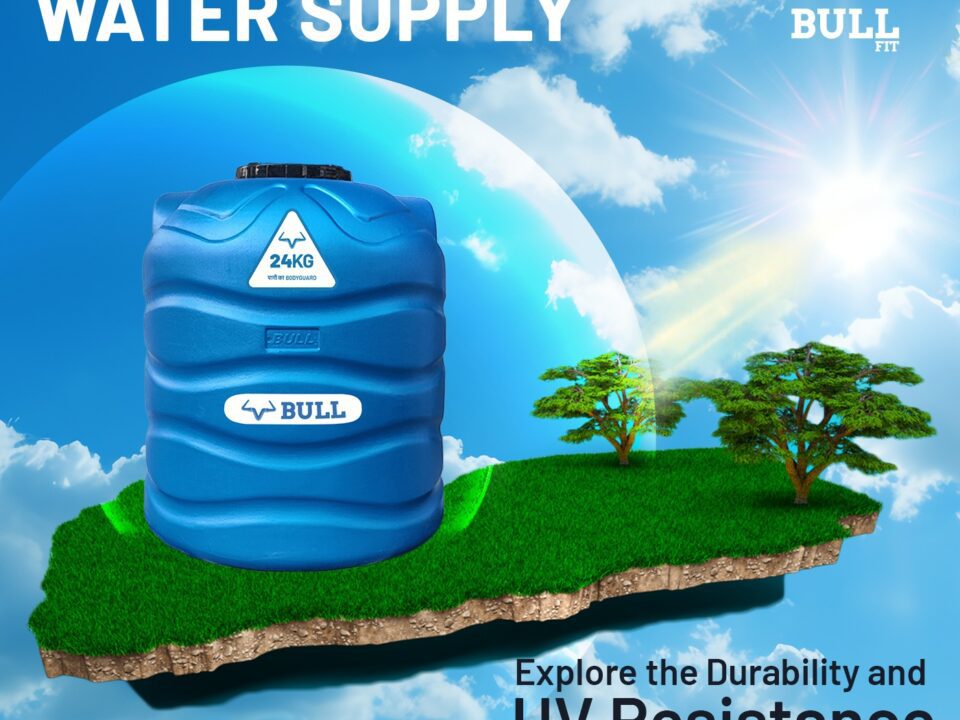
Unleashing the Power of Agri Pipes: A Comprehensive Guide to Modern Agricultural Piping
April 15, 2024
Plumbing for Remote and Rural Areas: Challenges and Innovations
April 30, 20243 Maintenance Tips for Water Storage Tanks to Ensure Longevity
With increasing climate variability causing erratic rainfall and frequent droughts, urban housing societies, commercial establishments, and agricultural operations are investing extensively in building large water storage tanks. Such reservoirs ranging from concrete ground-level tanks and covered water tanks up to stainless steel options are vital in mitigating supply shortages.
However, lack of periodic maintenance ruins tank integrity prematurely. It heightens risks of accidents, and overflow flooding while causing extensive physiological damage as structural failures manifest in pitting, cracks, leaks, etc. Ultimately the entire system needs to be rebuilt or replaced within 5-6 years after installation – an expensive loss that proper care could have postponed easily another decade down the line.
Overview of Water Tank Safety & Functionality Issues
The following are the most commonly faced problems from skipping vital checks and repairs on storage reservoirs:
Structural Cracking & total collapse: Continuous exposure to moisture causes tanks made using aggregate mixes or even stainless steel grades to develop fissures. Minor cracks rapidly evolve into leaks or complete wall breaches causing the tank to fully empty, flooding surroundings. Sudden giveaways also lead to accidents for those nearby.
Rust Corrosion & Pitting: High humidity conditions corrode metal components like mild steel, allowing deeper wall perforations over time. Concrete tanks equally develop surface abrasions and cavity formations from extended chemical contact allowing stored water to leak continually.
Contamination Risks & Health Issues: Rainwater mixed with bird droppings, fertilizer residues, pesticides, street garbage, etc easily enter open reservoirs. The toxic mixes breed parasites and bacteria leading to grave health disorders upon consumption. Stagnation also allows mosquito larvae to flourish propagating diseases like malaria, dengue, etc.
Choking of Pipelines & Overflow Accidents: Silt deposits combined with algae/ fungal overgrowths block the nozzles, inlet valves, and connecting pipes after some years. This stops water flowing occasionally or leads to spillover incidents causing electrical fires, electrocution risks, etc.
Limited Operational Life Span & High Premature Rebuilding Costs: The accelerated degradation caused by the above-mentioned factors renders tanks non-functional in just 5-7 years after installation in place of at least 15 years of lifespan or more for a robust design. Premature replacements rack up massive financial losses.

Adopting a proactive maintenance approach mitigates all such expensive headaches via timely repairs and safety checks. Just scheduling quarterly cleaning routines supplemented yearly by structural inspections helps water reservoirs reliably deliver complete service lives of 15-20 years.
3 Key Water Tank Maintenance Tips
Follow these vital best practices to enhance the longevity, efficiency, and safety compliance of storage tanks:
Annual Drainage & Surface Cleaning
Once before monsoons, empty the tank fully and allow interior walls to dry completely. Remove accumulated dirt using soft brush scrubbing, high-pressure water jets, etc. belonging intensity. Adhere to all safety protocols and wear protective gear to avoid accidents while cleaning confined spaces.
Use neutral, non-abrasive chemical solutions to gently wipe down the inner tank surfaces for complete algae and silt removal without damaging coatings. Rinse thoroughly and allow to air dry again before refilling. Doing this cleans contamination and arrests internal corrosion significantly.
Yearly Structural Inspection & Minor Repairs
Conduct a close visual examination of the interior and exterior walls whenever the tank gets drained for cleaning.
Assess pipe joints, valves, ladders, etc, and tighten/ seal them as needed to stop water loss through leak points using threads, clamps gasket seals, etc. Spot repairs maximize safety and water conservation while optimizing tank load capacity over the years.
Access Control & Usage Care
Prevent unsupervised entry and contamination by keeping tank mouths locked when not in active operation. Install safety railings with hazard warnings marked visibly to avoid accidents. Avoid overflow or fast drainage while removing water. Keep surrounding areas clean and well-lit while maintaining ventilation to minimize moisture damage. Such measures greatly arrest wear & tear.
Seeking annual assistance from service technicians
While minor repairs and safety tweaks get addressed periodically in-house, extensive maintenance services are best offered by qualified plumbing technicians annually. Specialists conduct enhanced diagnostics like ultrasonic tests to identify unseen flaws and repair them technicians finally sanitize the storage with chlorine tablets before declaring it operational.
Adopt Proactive Maintenance for Maximizing Water Tank ROI
Periodic servicing is vital for storage tanks as unlike active pipeline systems, stationary reservoirs do not undergo the self-cleaning effects of flowing water. Scheduling an annual cleaning and inspection supplemented by any repairs needed each year ensures one wards off most structural or contamination issues. Tanks then reliably serve full 15-20-year lifecycles or beyond depending on the weathering grade of material used. The small investment brings substantial dividends in terms of uninterrupted water availability, lowered risks, and extended asset lifespan.
Stay self-reliant for water through planning – install sufficient storage capacities and adopt robust maintenance protocols for smooth functionality regardless of supply uncertainties!



